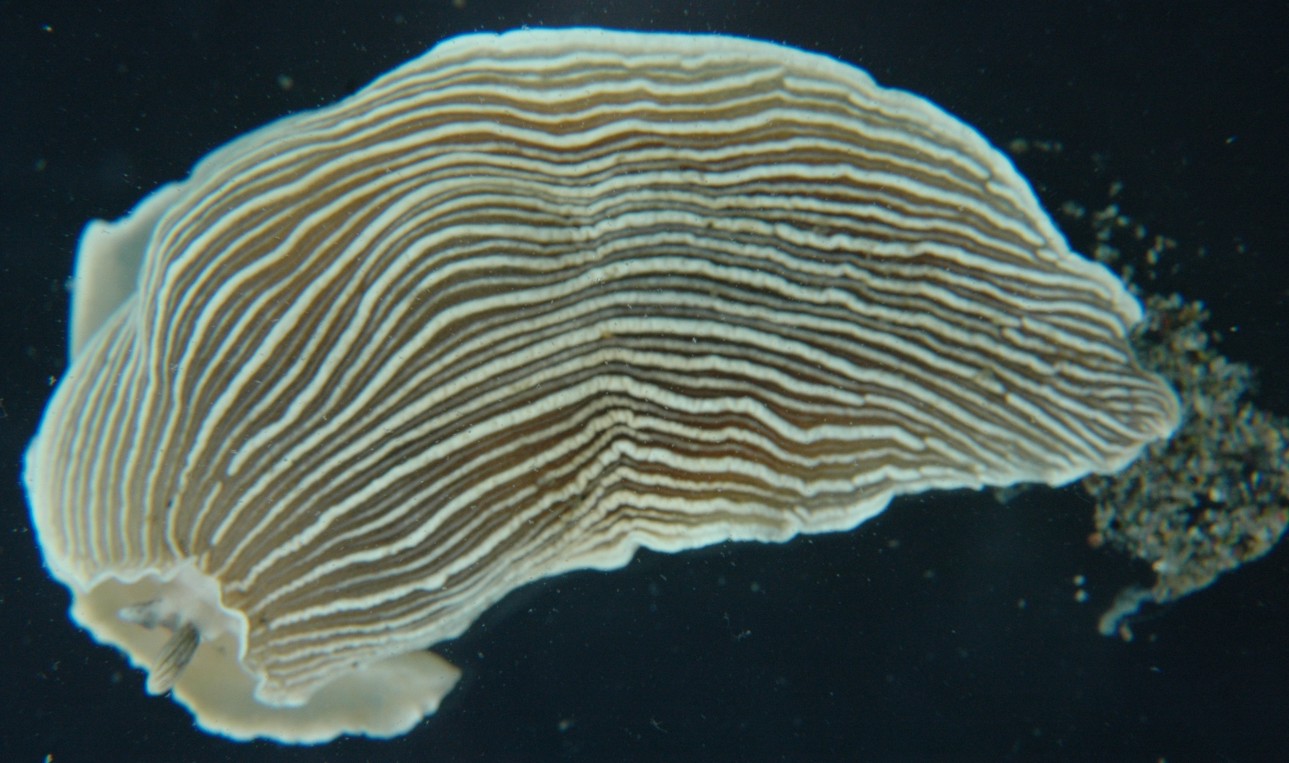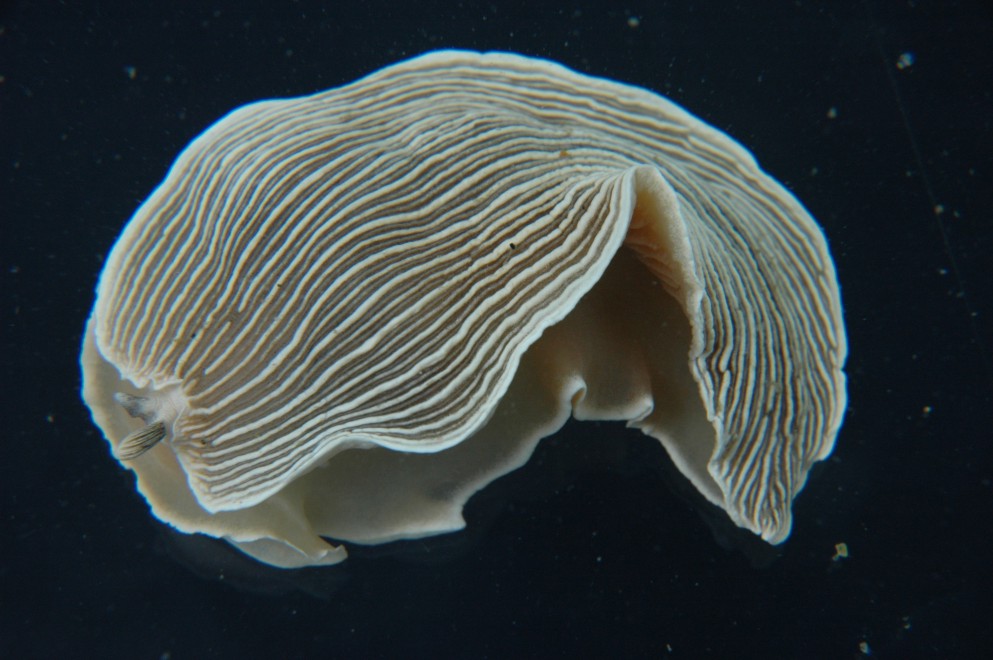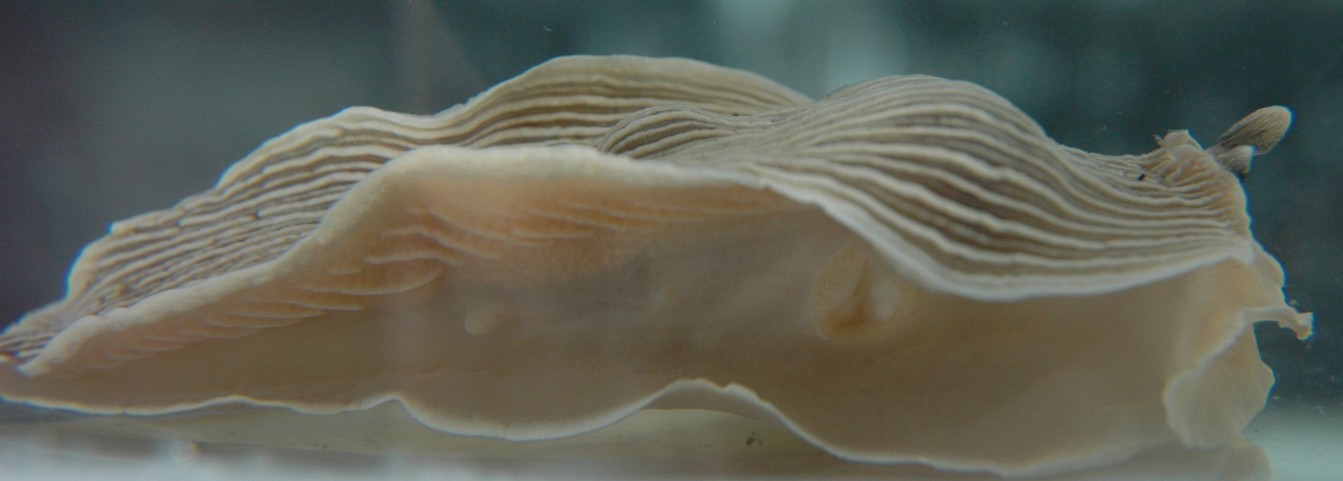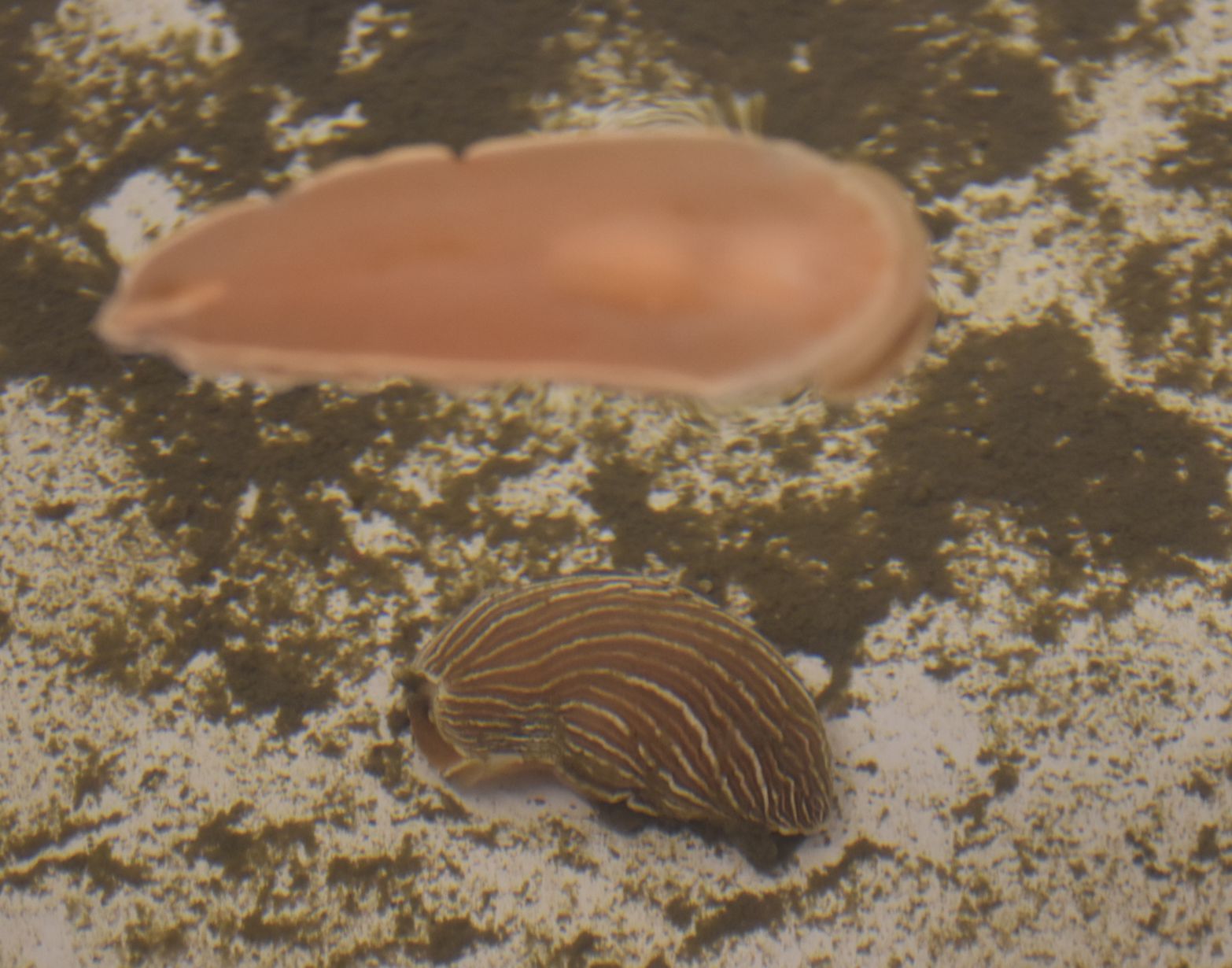Armina californica (Cooper, 1863)Common name(s): California armina |
|
| Synonyms: Pleurophyllidia californica |  |
| Phylum Mollusca
Class Gastropoda Subclass Opisthobranchia Order Nudibranchia Suborder Arminacea Superfamily Euarminoidea Family Arminidae |
|
| Armina californica, 6.5 cm long, from 6m depth in Burrows Bay. Photo taken at Shannon Point Marine Station | |
| (Photo by: Dave Cowles August 2006) | |
How to Distinguish from Similar Species: This species is very distinctive. No other local species has the combination of the anus on the right side, longitudinal white ridges on the dorsum, and no cerata.
Geographical Range: Gulf of Alaska to Panama
Depth Range: Mostly subtidal, 1 to 230 m
Habitat: Sandy bottoms
Biology/Natural History: This species eats sea pens such as Ptilosarcus gurneyi. (or on sea pansies such as Renilla kollikeri farther south where those grow). May be largely buried in the sand with primarily the rhinophores projecting above the surface of the sand. Eggs are laid in a pale pinkish-brown spiral chain of capsules.
According to Baltzley et al., (2011), many gastropods, including this species, have a special network of pedal ganglia in their foot which assists in crawling. The two main neurons involved produce pedal peptides which elicit an increase in the rate of beating of cilia on the foot, resulting in crawling.
| Return to: | |||
| Main Page | Alphabetic Index | Systematic Index | Glossary |
References:
Dichotomous Keys:Kozloff 1987, 1996
Smith and Carlton, 1975
General References:
Behrens,
1991
Kozloff,
1993
McDonald
and Nybakken, 1980
Morris
et al., 1980
Niesen,
1997
Ricketts
et al., 1985
Scientific Articles:
Baltzley,
Michael J., Allison Serman, Shaun D. Cain, and Kenneth J. Lohmann, 2011.
Conservation of a Tritonia
pedal peptides network in gastropods. Invertebrate Biology
130: 4 pp. 313-324
Web sites:
General Notes and Observations: Locations, abundances, unusual behaviors:

This species has a deep groove along the sides between the wide flap
of the dorsum and the wide flap of the foot. Here the groove
on the
left side can be clearly seen as the animal turns.

This species has its anus on a prominent papilla on the right side,
in a groove between the flaps of the dorsum and the foot. The
view
above shows the groove on the right side of the animal, with the anus
to
the left (posterior) and the gonopore to the right (anterior)

This
species can crawl upside-down along the surface film of the water, as
shown by this individual crawling along the surface film of
one of our seawater tanks, about 20 cm above another individual
crawling along the bottom. Photo by Dave Cowles, August 2015

This Armina (above) is feeding on a Ptilosarcus gurneyi sea pen. Below are the remains of Ptilosarcus after active feeding by Armina. The central shaft is the rachis.
Authors and Editors of Page:
Dave Cowles (2006): Created original page